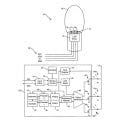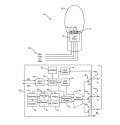Carpenter Decorating is a 75-year-old veteran and leader in seasonal lighting and signage. Jeffrey Callahan, the named inventor on the patent, explained to LEDs Magazine that the technology was developed in collaboration with Philips Semiconductors, which is now NXP.
"We worked with Philips/NXP for more than 3 years to develop the technology," says Callahan. "They showed great support for the core concept ideas from the very start and contributed their IC engineering genius." Philips has already launched an IC that enables the applications described in the 7,015,825 patent.
"Our patent covers the use of the new technology in solid-state lighting applications, color variability, and networked lamps and fixtures," says Callahan. "Philips [now NXP] retains its use in cellphone backlighting and other non-solid-state lighting applications." In fact, NXP informs customers that they must license the 7,015,825 patent if they want to develop products in the application areas covered by the patent.
Callahan describes the technology as a "fundamentally new and different LED lighting control method", rather than using old technologies such as DMX to dim multicolor LED fixtures using PWM. "We have demonstrated that LED lighting devices in numerically addressed lighting networks can be achieved using low-level, high-drive I2C network constructs," he says.
The NXP chip in question is the PCA9633, the first IC to use the new 1 MHz Fast Mode+ I2C logic bus (see our in-depth article for more details). Compared with the basic I2C bus, the new standard enables much greater distances and greater capacitive loads.
Callahan explains that the ICs are numerically addressable and can either directly drive RGB and RGBA LEDs or interface easily to external drivers to control much larger solid-state lighting arrays. The chips allow for individual control of each LED connected to each output bit and can be controlled globally or broken up into subgroups.
The older version of I2C had numerous issues relating to control distance as well as LED driver addressing and color mixing, but these were all broken down by the developments revealed in the patent. "No-one thought that the decades-old I2C bus could be revamped so well into the FM+ standard, and then used so imaginatively for wide-area color variable LED lighting control," says Callahan.
Callahan explains that master/slave FM+ I2C solid-state lighting network topologies open up a number of new avenues for the LED luminaire dimming and color mixing control community. These include bus bi-directionality for the addition of lumen maintenance and color temperature sensors, and a broad host of other advantages.
As more companies continue to sign licenses to gain access Color Kinetics' patented technologies, and other companies continue to grumble about the validity of these patents, Carpenter Decorating has made a significant breakthrough by developing technology that uses a completely new approach to controlling LED lighting fixtures.






